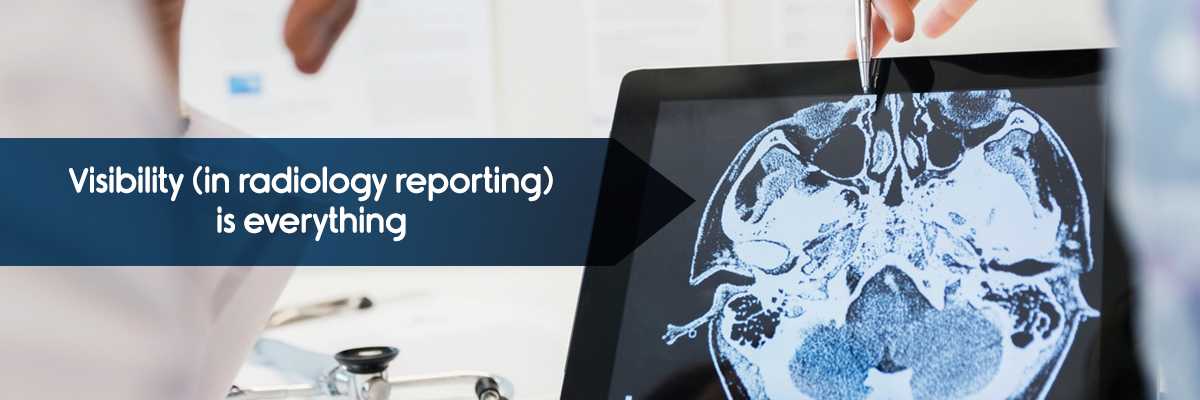There is a great story in the Indian mythological tour de force the Mahabharata about Arjuna and Duryodhana, representing the forces of good and evil respectively, coming to visit their mentor Lord Krishna to seek his support for their respective armies during battle. When they arrive he is asleep on his bed. Duryodhana who arrives first promptly seats himself next to the head end of the bed, while Arjuna respectfully sits at his feet. When Krishna who is lying supine, awakens, his eyes naturally first go to the foot of the bed where he sees Arjuna and as he saw him first, offers him his support, which the latter gladly accepts. Duryodhana is left to regret his choice of the less visible location.
The moral of the story is that visibility is everything, and this applies no less in radiology reporting. In other words, the finding that is of greatest clinical significance should be given the maximum visibility in the report. This seems logical and one would expect it to be intuitive, however, that is not necessarily the case, hence the reason for this blog post. Time and again, I observe residents and junior radiologists listing as their first impression an incidental observation such as a fatty liver, or a renal cyst while the main culprit, namely the common bile duct calculus or the hydronephrosis receive a trivial second, or sometimes even third billing.
Even more concerning is when the relevant finding or pertinent negative is not even mentioned in the impression (“it was mentioned in the body of the report”) In response I repeatedly remind my students/colleagues that only 50% of clinicians actually read the body of the report, and so by not mentioning an important positive or negative in the body of the report, one takes a 50% chance that it will remain undetected by the clinician.
As critical values communication takes on increasing importance, this has both regulatory as well as medicolegal significance. Failure to adequately emphasize the significance of a finding is tantamount to missing the finding altogether.
And so my frequent message to younger radiologists is to “Say it loud, say it proud” when there is an acute or clinically relevant finding, and not bury it in the body of the report or as impression 6 on the second page of the report.
Of course, when one isn’t sure of the finding then it is equally important to hedge effectively and communicate one’s uncertainty to the clinician. But that is the subject of a different blog post.
For now, suffice to say that an important and significant finding should be ‘shouted from the treetops’ from the perspective of high visibility in the report to ensure compliance with quality norms, to diminish legal risk, and most importantly of all, to benefit patient care.

